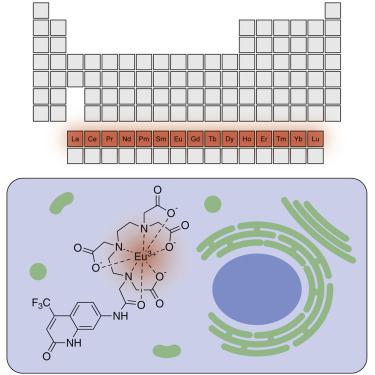Cell Chemical Biology ( IF 6.6 ) Pub Date : 2020-07-30 , DOI: 10.1016/j.chembiol.2020.07.009 Ukrae Cho 1 , James K Chen 2

|
The unique photophysical properties of lanthanides, such as europium, terbium, and ytterbium, make them versatile molecular probes of biological systems. In particular, their long-lived photoluminescence, narrow bandwidth emissions, and large Stokes shifts enable experiments that are infeasible with organic fluorophores and fluorescent proteins. The ability of these metal ions to undergo luminescence resonance energy transfer, and photon upconversion further expands the capabilities of lanthanide probes. In this review, we describe recent advances in the design of lanthanide luminophores and their application in biological research. We also summarize the latest detection systems that have been developed to fully exploit the optical properties of lanthanide luminophores. We conclude with a discussion of remaining challenges and new frontiers in lanthanide technologies. The unprecedented levels of sensitivity and multiplexing afforded by rare-earth elements illustrate how chemistry can enable new approaches in biology.
中文翻译:

基于镧系元素的生物系统光学探针。
镧系元素(如铕、铽和镱)的独特光物理特性使其成为生物系统的多功能分子探针。特别是,它们的长寿命光致发光、窄带宽发射和大斯托克斯位移使有机荧光团和荧光蛋白无法进行的实验成为可能。这些金属离子进行发光共振能量转移和光子上转换的能力进一步扩展了镧系元素探针的能力。在这篇综述中,我们描述了镧系发光体设计的最新进展及其在生物研究中的应用。我们还总结了为充分利用镧系发光体的光学特性而开发的最新检测系统。最后,我们讨论了镧系元素技术中的剩余挑战和新前沿。稀土元素提供的前所未有的灵敏度和多路复用水平说明了化学如何能够实现生物学的新方法。











































 京公网安备 11010802027423号
京公网安备 11010802027423号